How to play guitar like Green Day's Billie Joe Armstrong
Learn the secrets of the iconic punk-rock guitarist's deceptively dextrous playing techniques
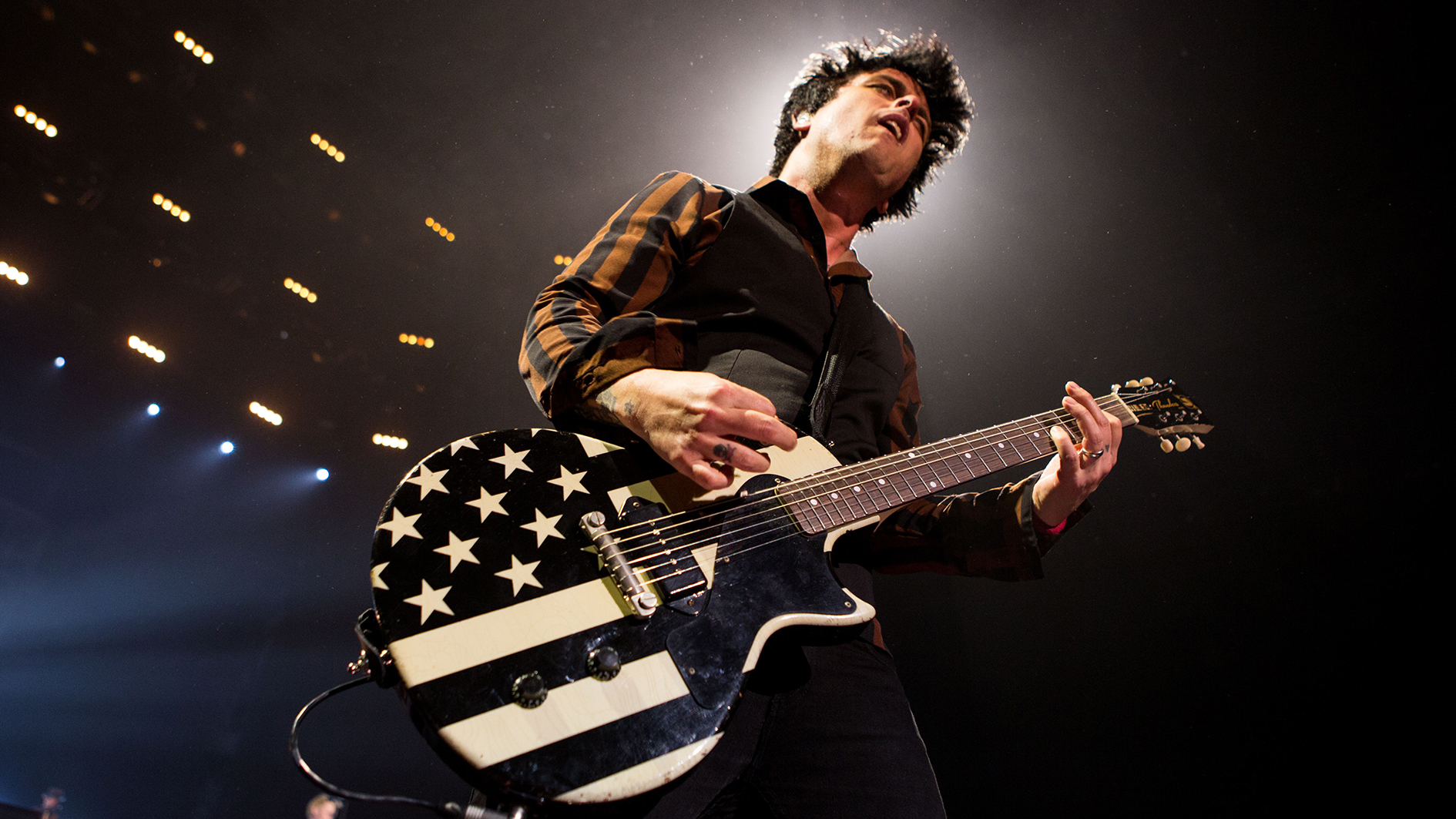
Billie Joe Armstrong sure knows how to make guitars sound big! Even shred god Paul Gilbert described him as one of the best guitarists in the world for his blistering downpicking. Billie Joe’s mastery of palm muting and powerchord riffing rivals even thrash metal giant James Hetfield.
Here, we’re giving you the tools to deliver Green Day’s breakneck riffing and melodic solos. The outwardly simple delivery is deceptive, and you’ll need to develop highly accurate fretting to make it work.
To play as hard as possible, Billie Joe often strums all six strings regardless of the chord, using his fretting hand to control which notes ring out. Check out our photos to see how small details make simple riffs sound so great.
1. Holding the pick
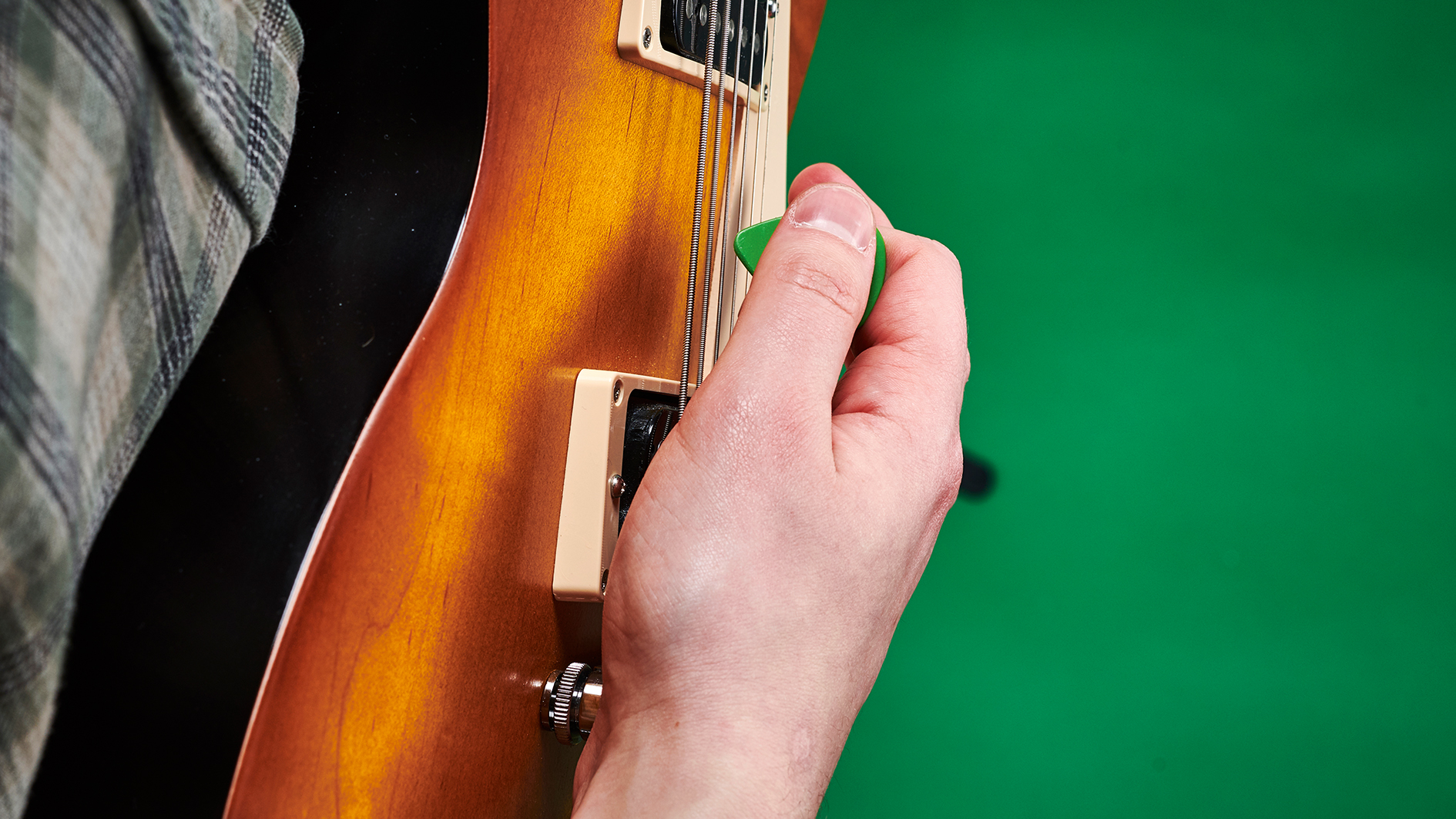
Billie holds his pick at an angle between his thumb and index finger, not quite flat on the pad nor on the side, which facilitates...
2. Pick angle
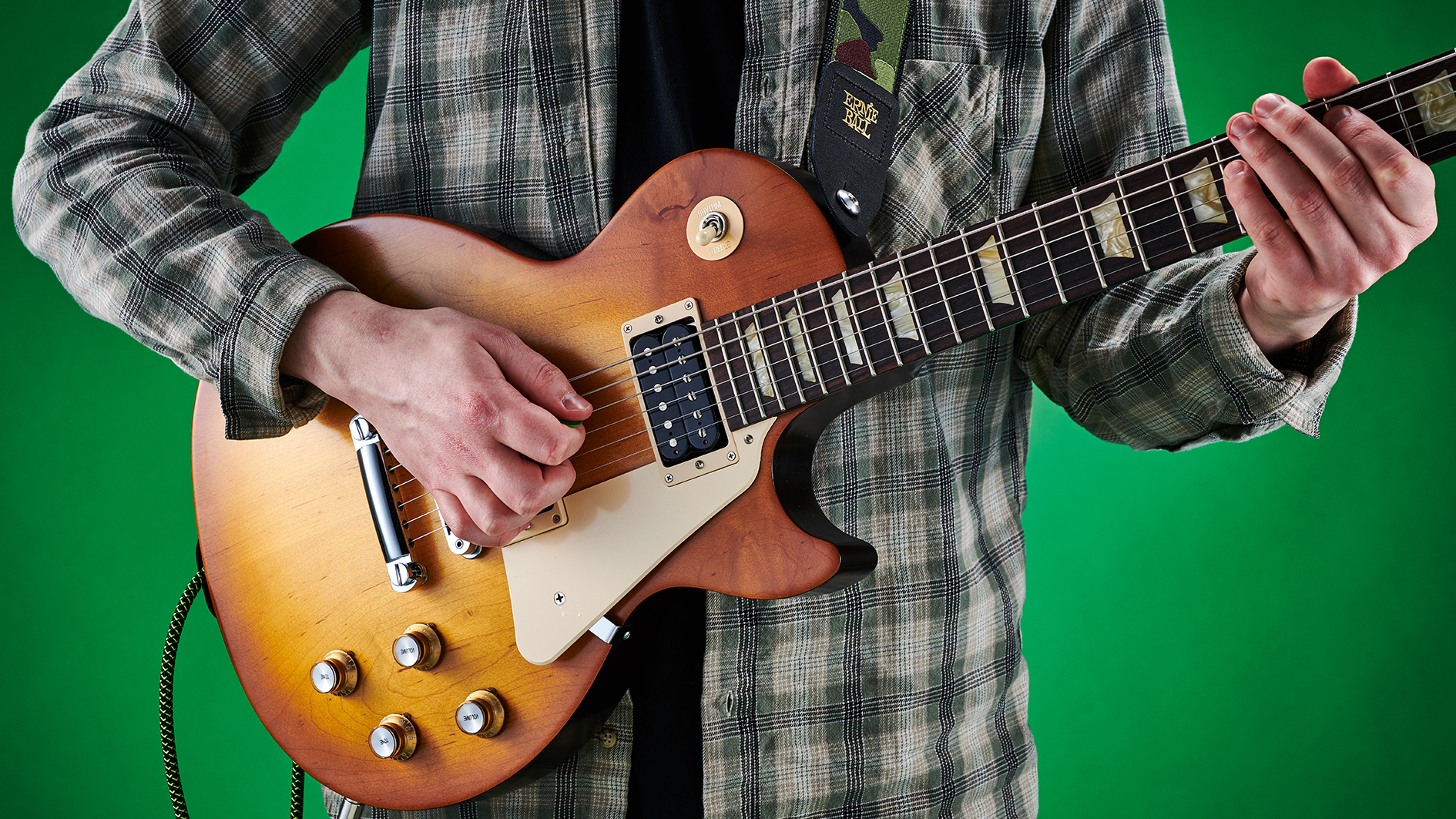
Attacking the strings at about 30 degrees gives Billie an aggressive tone and reduces resistance so he can play faster.
3. Stubbing
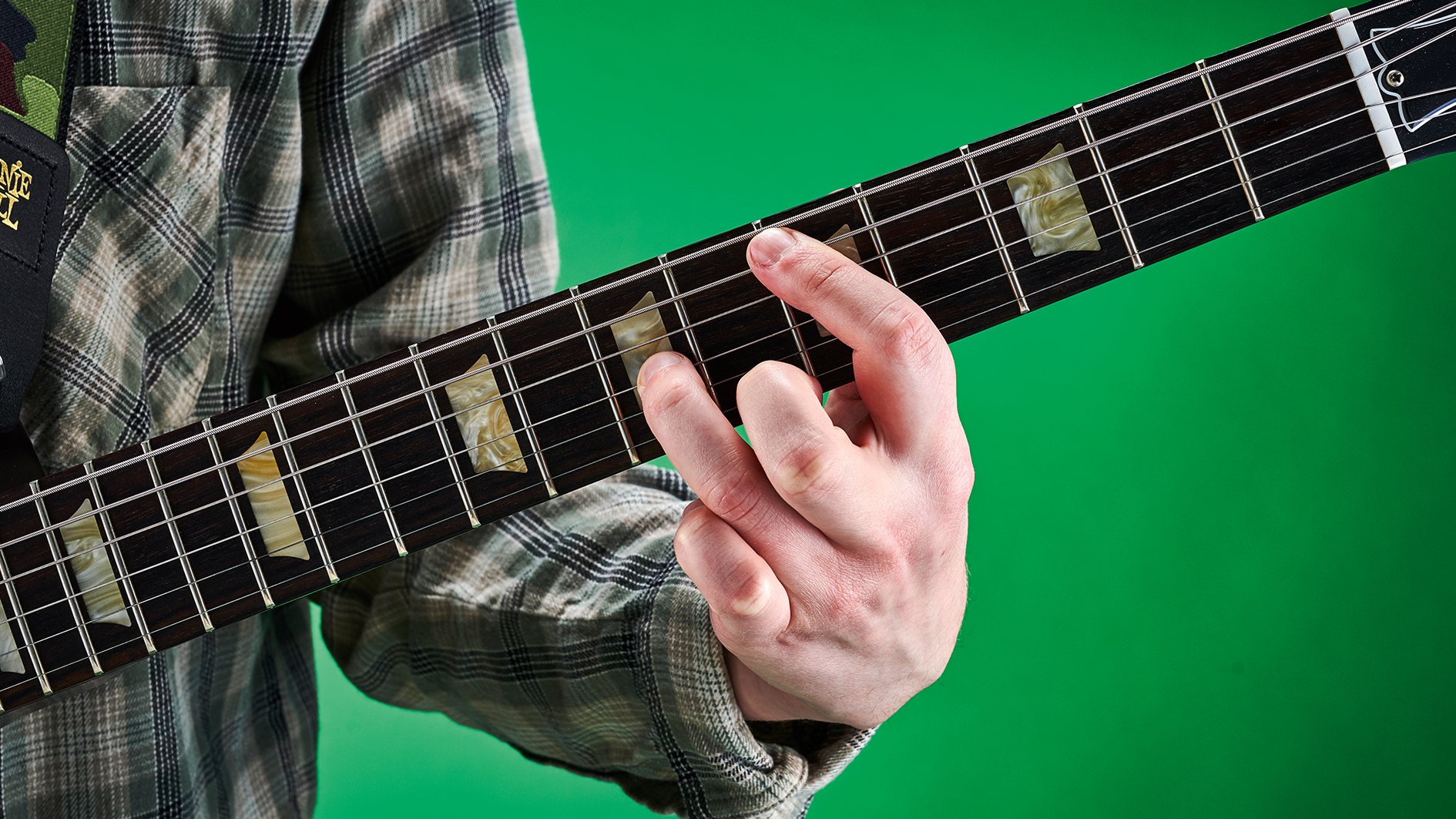
When fretting octaves or chords with their roots on the fifth string, the tip of Billie’s index finger brushes (or ‘stubs’) the sixth string just enough to mute it.
4. Fret hand muting
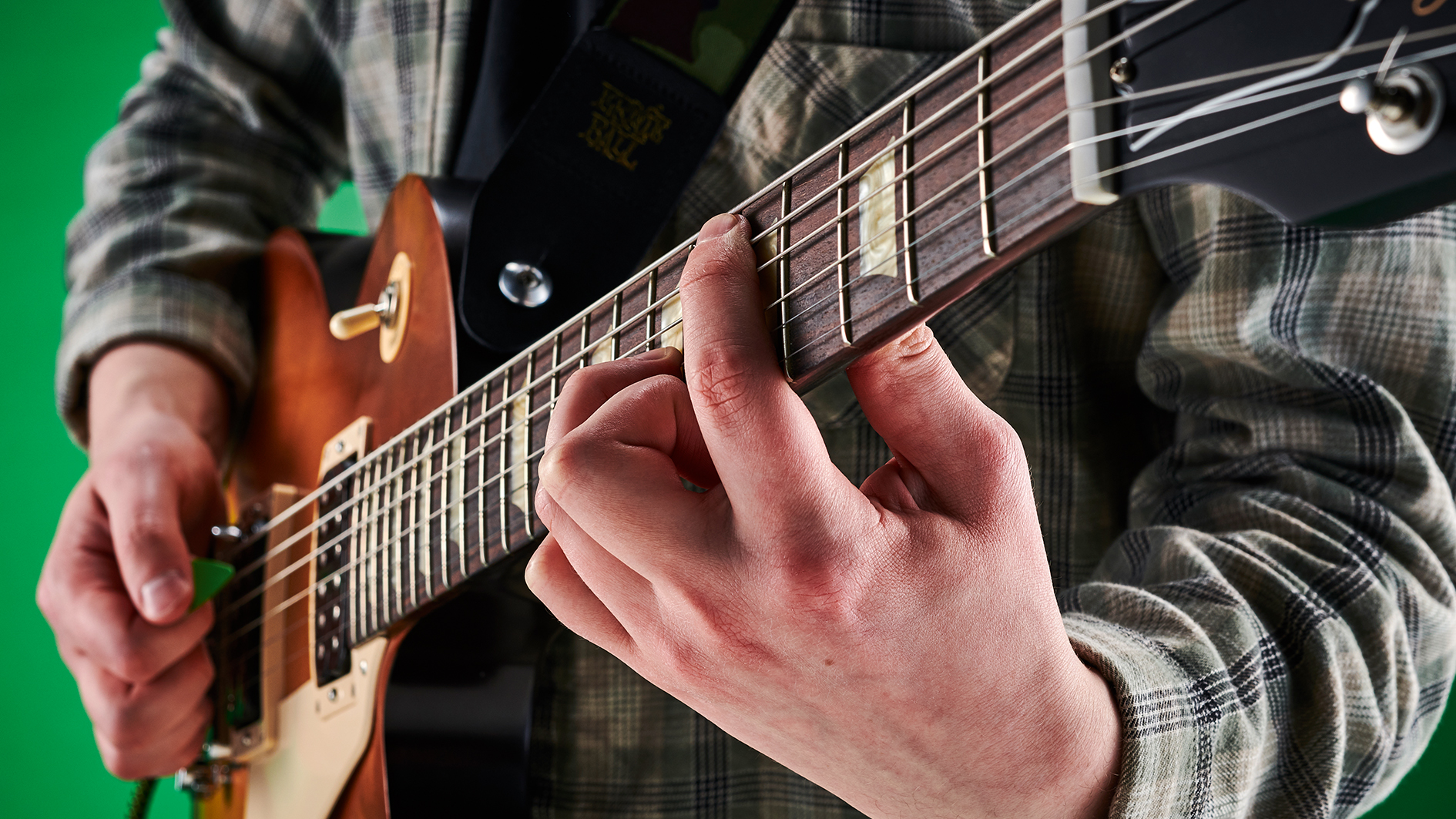
Billie Joe’s first finger rests across the first four strings, muting them. Together with stubbing, he can pick aggressively without unwanted open string noise.
5. Lead playing thumb position
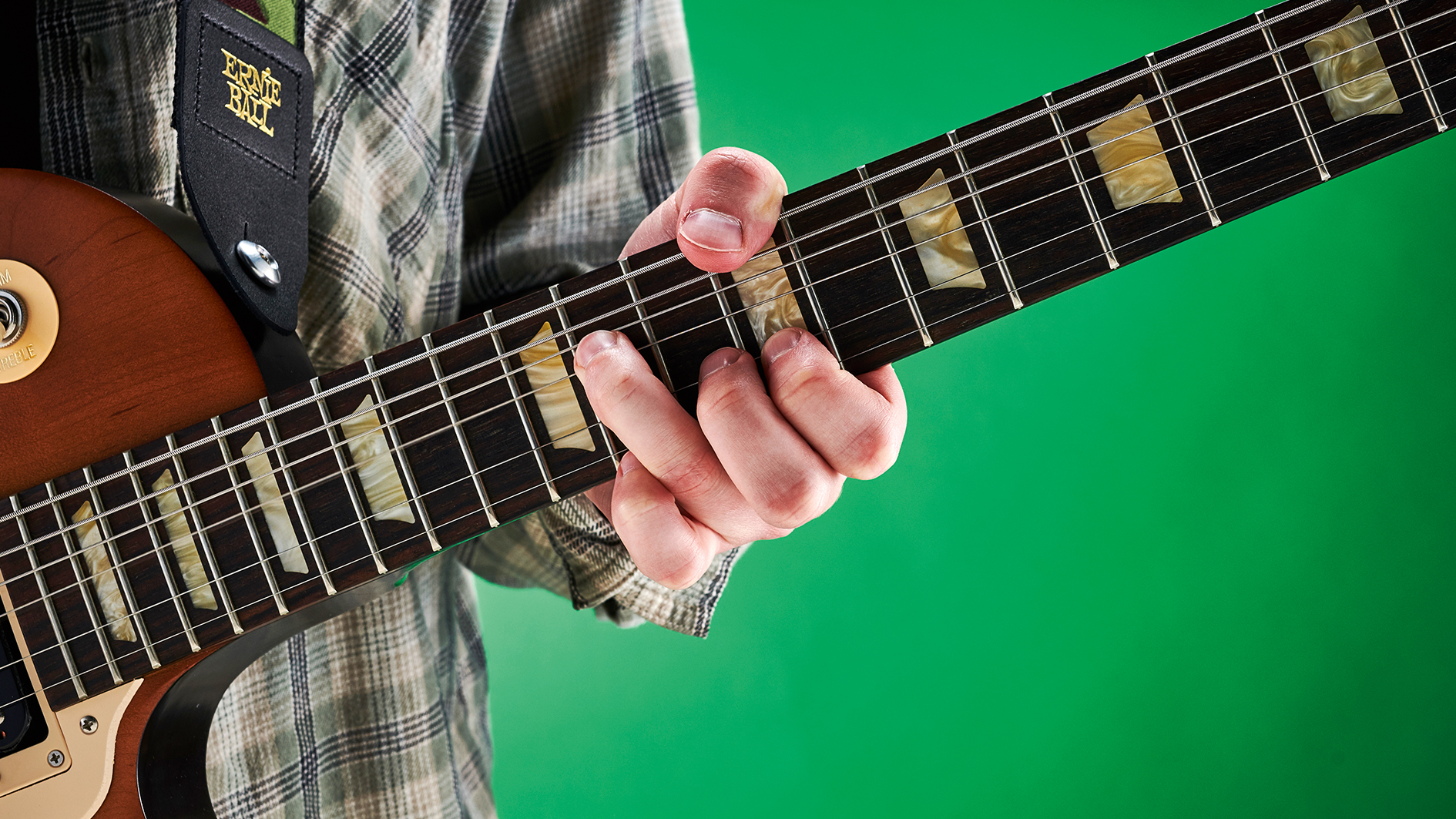
Live, Billie uses this thumb position to fire off Chuck Berry-style solos. It makes string bending easier on the high strings, and he sometimes uses it for powerchords.
6. Rhythm playing thumb position
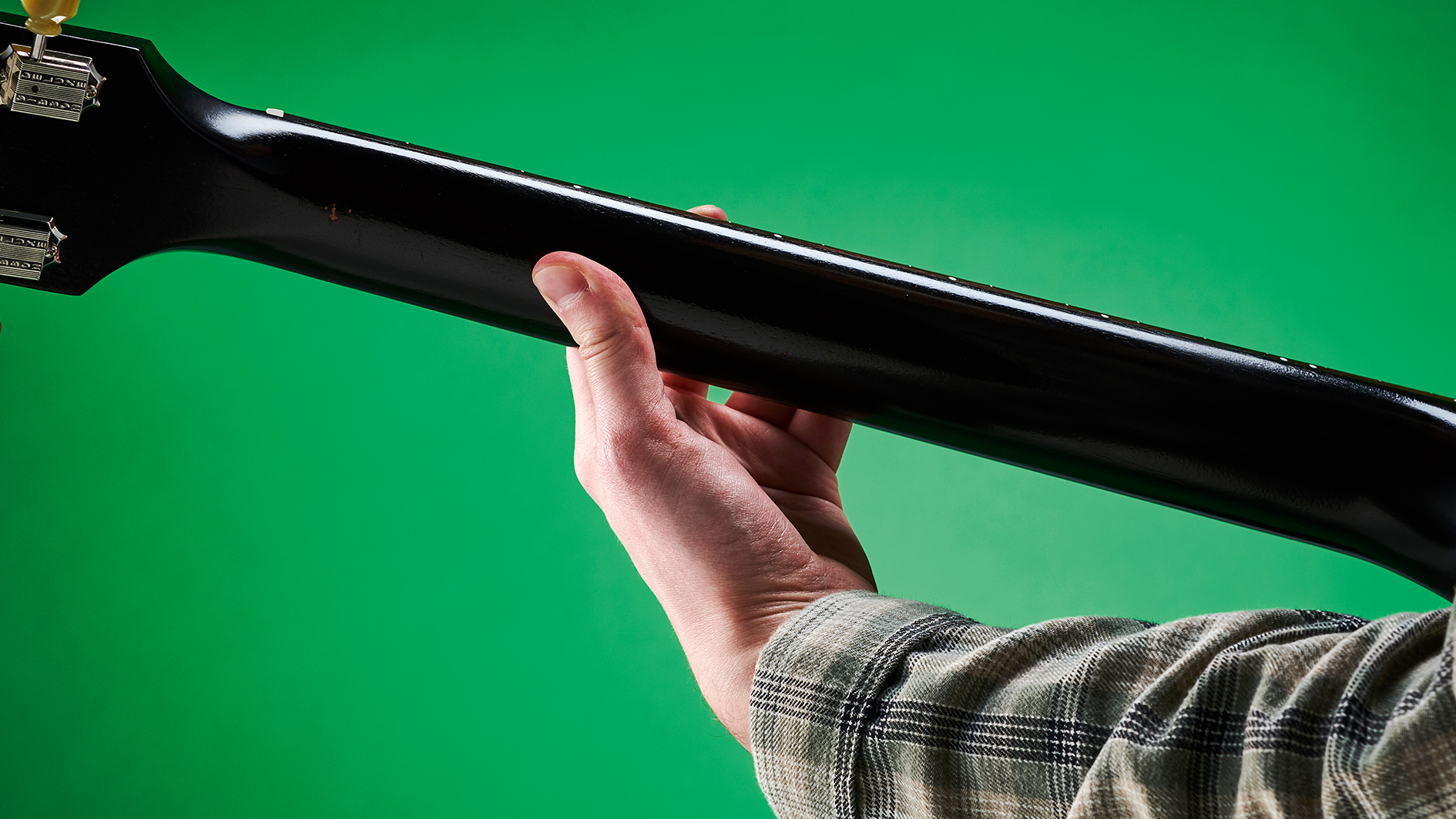
Billie Joe doesn’t worry much about thumb placement for rhythm playing, but he often uses this position. Do what feels comfortable, as long as there’s no fret buzz.
7. Palm muting
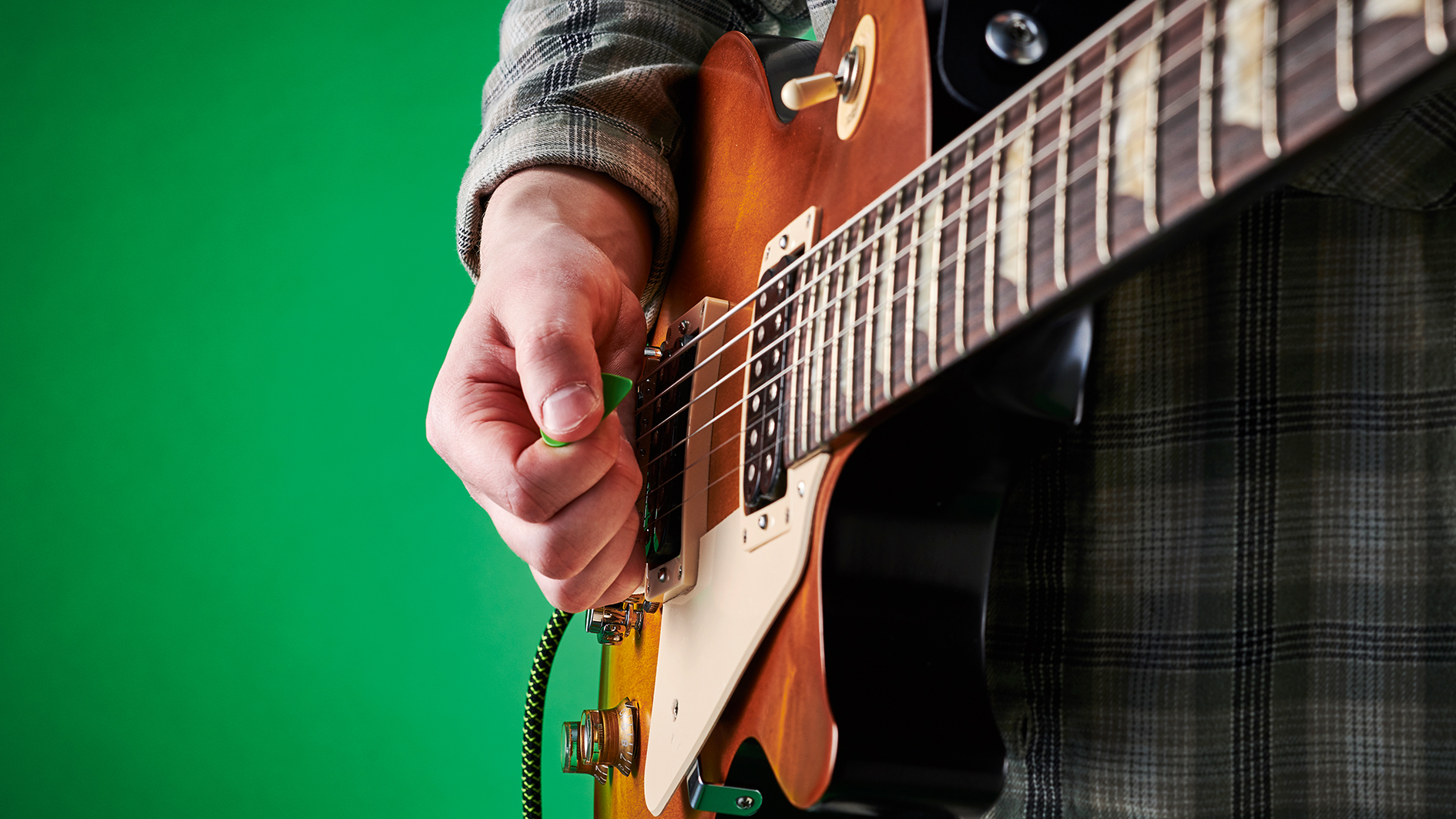
This is where your hand needs to be for BJA’s legendary palm-muted powerchords. Note how the back of your hand touches the bridge saddles. Then, to switch...
8. Unmuted picking position
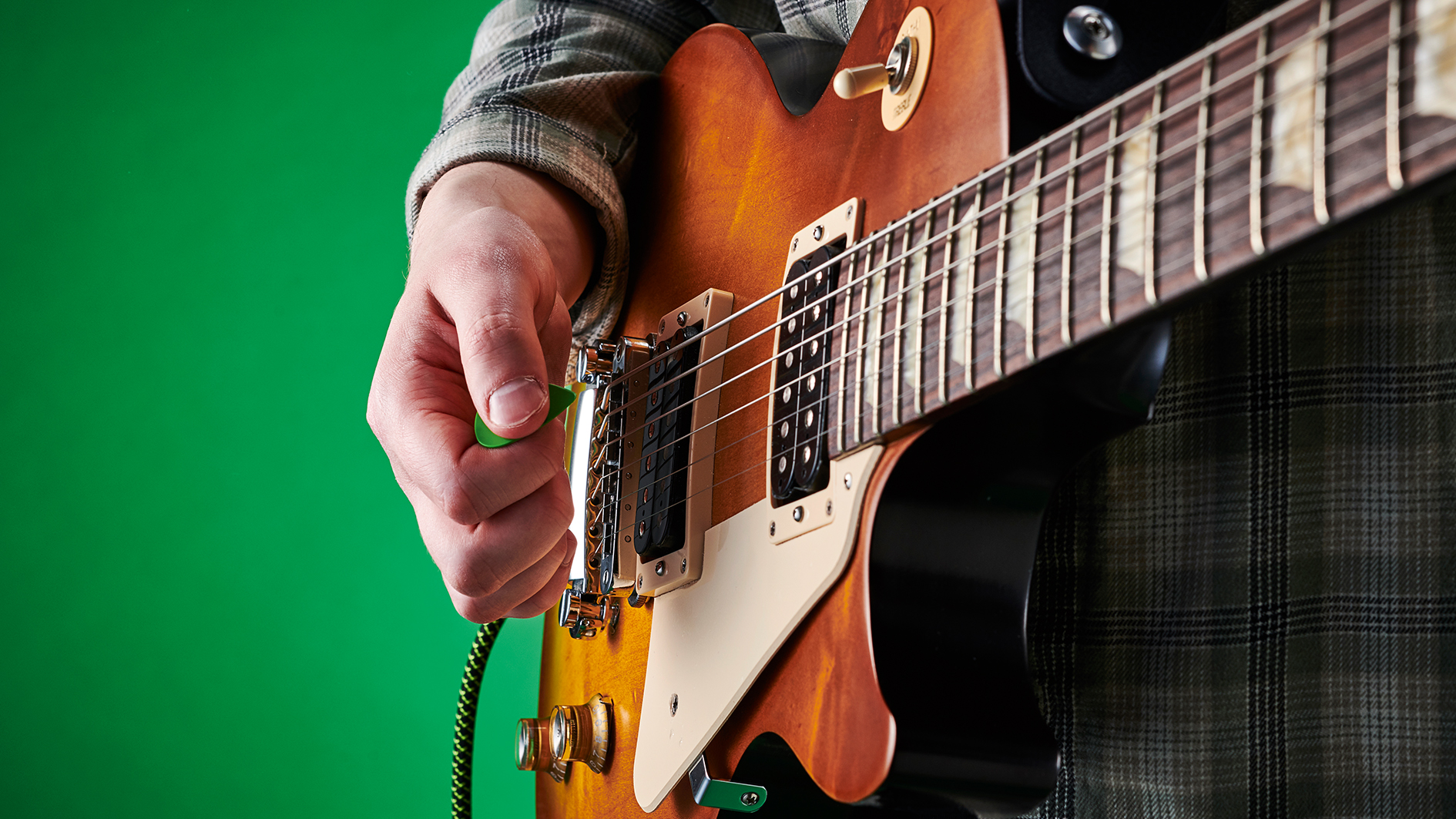
...rapidly to an unmuted sound, he makes a tiny rotation of the wrist. The two positions should be extremely close so you can alternate between them at speed.
9. Pick attack 1
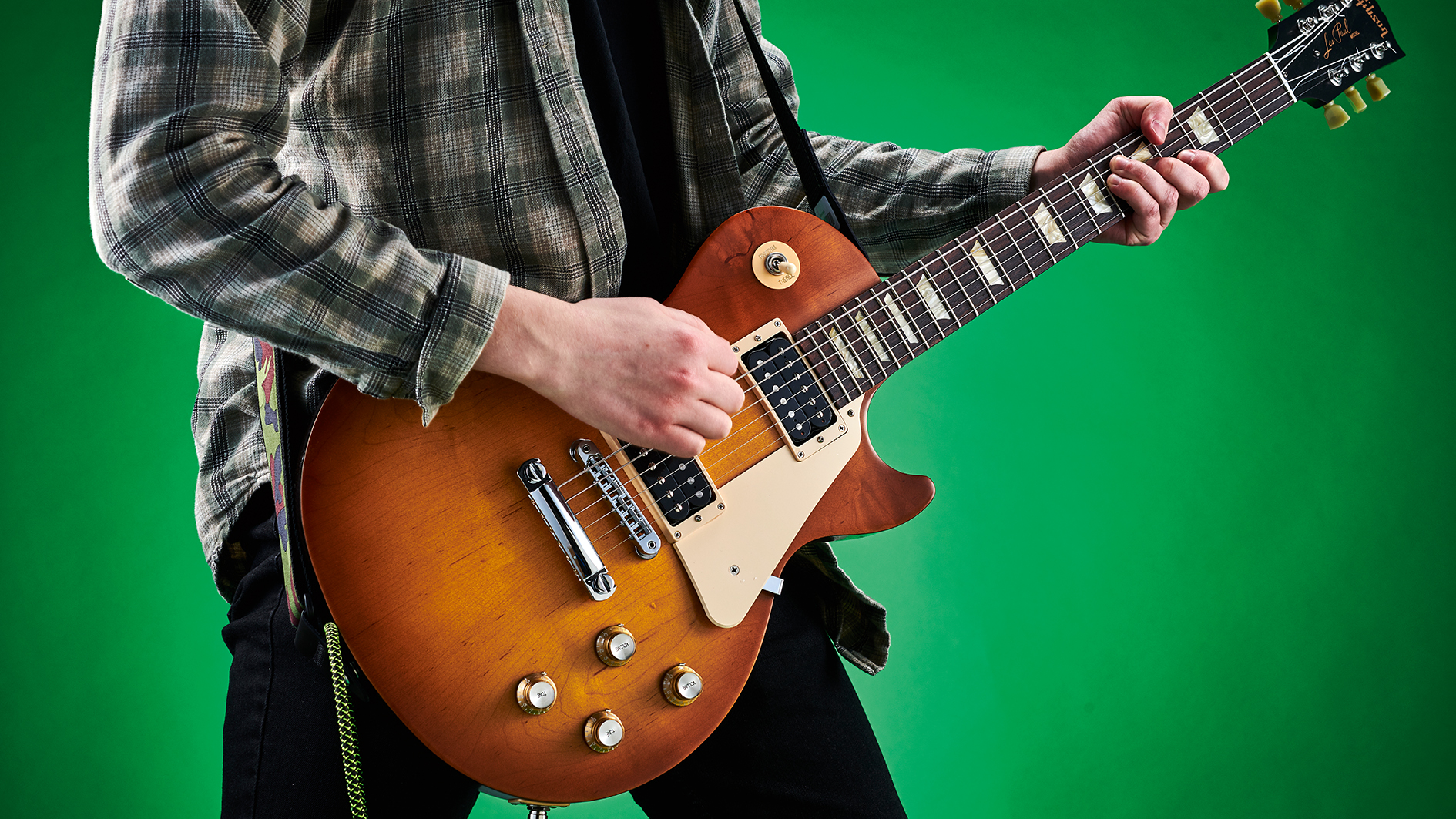
Billie Joe’s pick motion is a combination of forearm rotation and flicking his wrist. For loud strums, he raises his hand level with the top of the guitar, palm up...
10. Pick attack 2
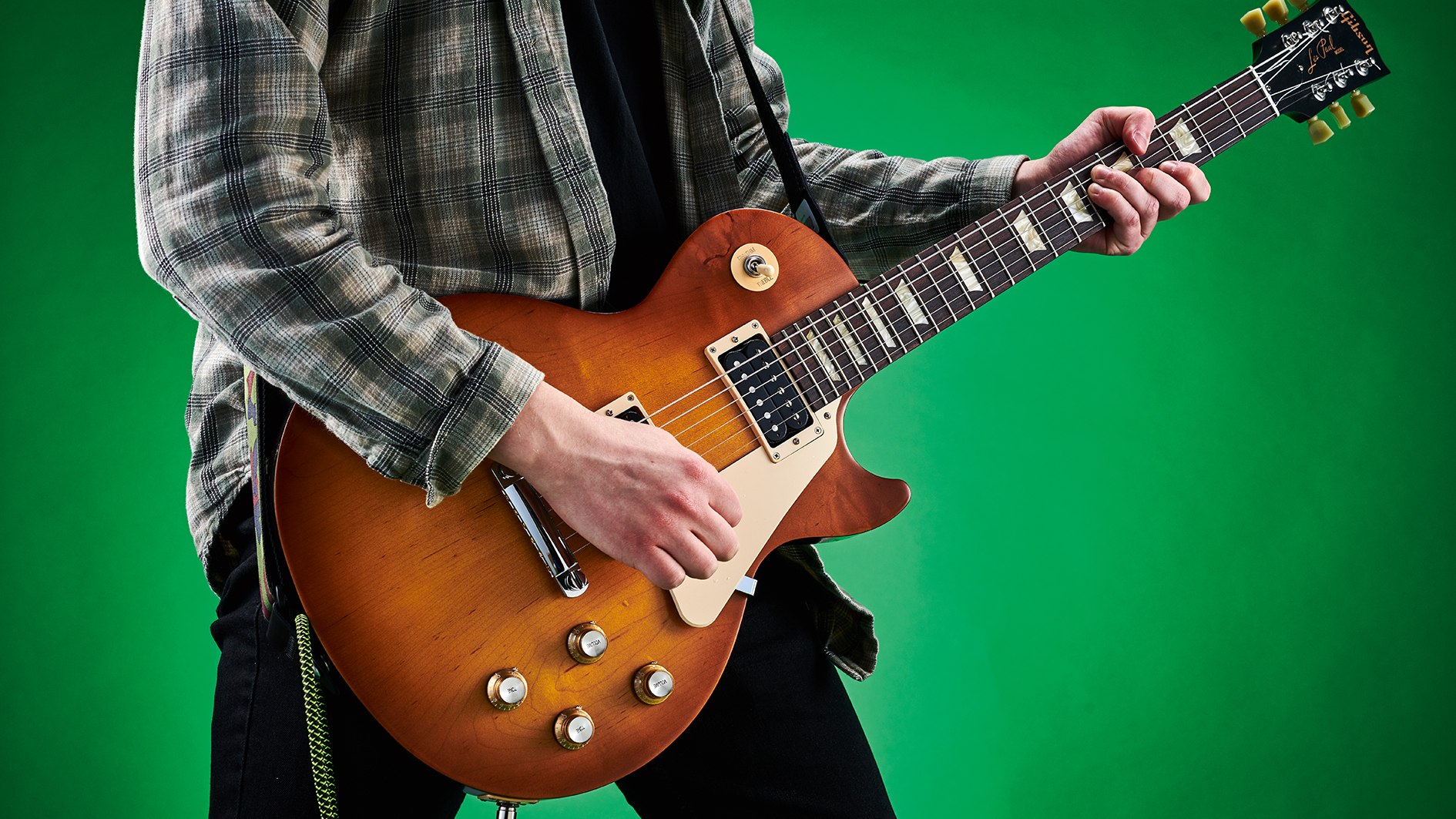
...before slamming the pick downwards, turning his hand so it finishes in this position. The pick needs to brush the top of the strings to avoid getting stuck.
21st century technique breakdown
You’ve looked at Billie Joe’s playing techniques, now have the time of your life with these Green Day inspired riffs! Here you can put your technical know how into practice while you learn some punk style riffs.
And it’s more than just pure technique - we’re looking at some now standard musical ideas that can be traced back through punk’s history. From essential chord shapes to powerchord riffs and octave-based melodic soloing, there’s enough food for thought here to keep you going during any punk-inspired jam session.
Have a look at the tab, listen to the following audio tracks and try to memorize some of these essentials.
1. Powerchord embellishments

The bulk of Billie Joe’s riffs use classic powerchords like the D5 and G5 shapes in bars 1 and 3. He’ll also mix things up with the sus4 and slash chord shapes (A/C#, G/B etc) shown here.
You can hear this approach on the outro to Basket Case. Even when he’s not palm-muting, Billie still prefers downstrokes for the most aggressive sound.
2. Palm-muted downpicking

Riffs like this will develop your downpicking and your ability to switch rapidly between palm-muted and unmuted strumming. As you play, mentally check for tension in your shoulder, elbow, and wrist - it’ll slow you down, so, if you’re at all tight, stop playing, shake it off and try again.
The slide in bar 4 is another essential punk motif. Keep pressure on the strings as you slide to keep them ringing out.
3. Octave-based soloing

Green Day solos are melody-based and easily singable. To make the lines stand out, Billie Joe often plays them in octaves, as on American Idiot. Stub your first finger against the sixth string and use the underside of that finger to mute the idle strings.
You’re then free to strum all six strings aggressively and only hear the notes you’re fretting.
4. Fret hand muting

On Green Day classics like Nice Guys Finish Last, Know Your Enemy and Holiday, the powerchords are often punctuated with staccato bursts where the strings are muted entirely with the fretting hand.
If you mute with just one finger you’ll hear lots of high harmonics; muting with two or more digits gives you Billie Joe’s chunky, percussive sound. Aim to mute all six strings, and then you can pick hard without fear of unwanted noise.
5. Pedal tone soloing
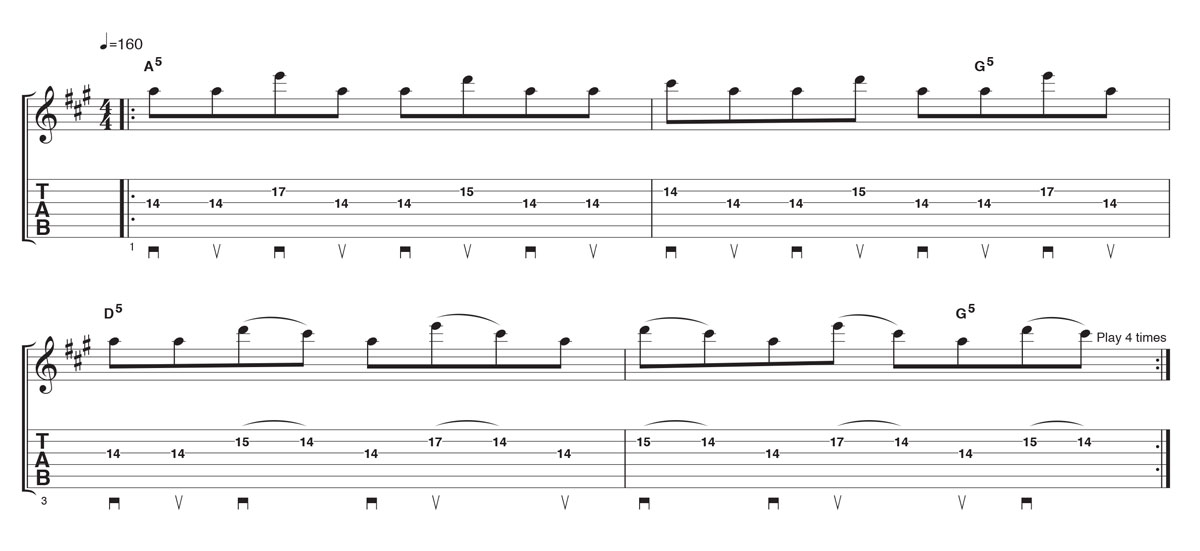
When he’s not soloing in octaves, Billie Joe often creates memorable lines by using pedal tones. He’ll often throw these in to embellish solos which are otherwise based on the vocal melody.
You can try playing the same licks over changing chords to get more mileage from one idea. In bars 3 to 4 here, you’ll need to barre the second and third strings to play smoothly.
Get The Pick Newsletter
All the latest guitar news, interviews, lessons, reviews, deals and more, direct to your inbox!
Total Guitar is one of Europe's biggest guitar magazines. With lessons to suit players of all levels, TG's world-class tuition is friendly, accessible and jargon-free, whether you want to brush up on your technique or improve your music theory knowledge. We also talk to the biggest names in the world of guitar – from interviews with all-time greats like Brian May and Eddie Van Halen to our behind the scenes Rig Tour features, we get you up close with the guitarists that matter to you.
“There are so many sounds to be discovered when you get away from using a pick”: Jared James Nichols shows you how to add “snap, crackle and pop” to your playing with banjo rolls and string snaps
Don't let chord inversions bamboozle you. It's simply the case of shuffling the notes around








![Joe Bonamassa [left] wears a deep blue suit and polka-dotted shirt and plays his green refin Strat; the late Irish blues legend Rory Gallagher [right] screams and inflicts some punishment on his heavily worn number one Stratocaster.](https://cdn.mos.cms.futurecdn.net/cw28h7UBcTVfTLs7p7eiLe.jpg)


